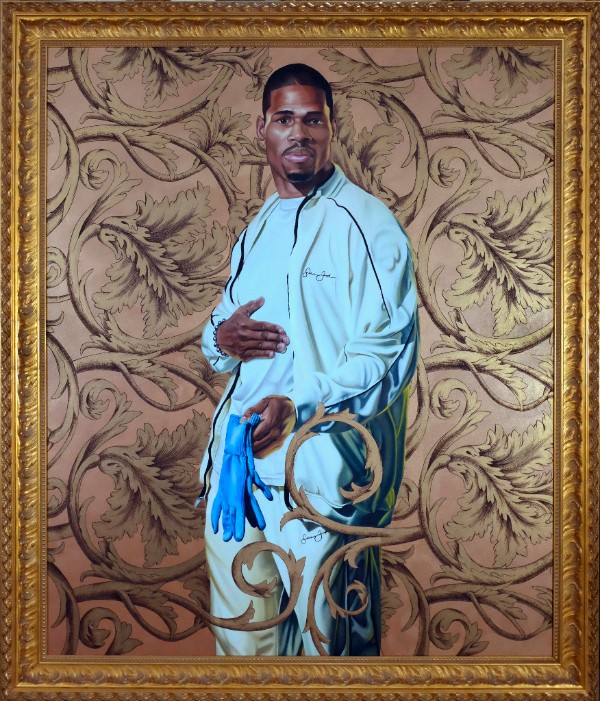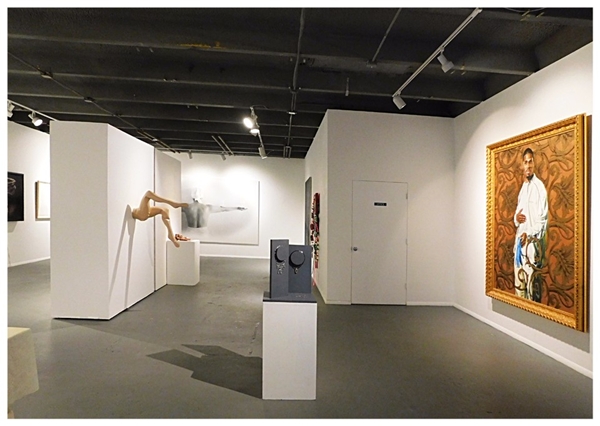Art vs. Fetishism or The Utility of Idolatry
William Cannings, Alex Cao, Edouard Duval-Carrie, Luis Gonzalez Palma, Vik Muniz, Nadin Ospina, Marta Maria Perez Bravo, Mabel Poblet, Santiago Porter, Sandra Ramos, Jorge Rios, Graciela Sacco, Carolina Sardi, Tracey Snelling, Leandro Soto, Jose Toirac & Meira Kehinde Wiley

PAN AMERICAN ART PROJECTS
THE ANNEX – Little River 274 A NE 67th St. Miami, FL 33138Tel. 305.751.2550 e-mail:


October 21, 2017 > January 14, 2018

|

|
Every act of fetishism carries with it the implicit act of substitution or attribution. The term Fetishism was born in the 16th century, but its practice extends back to the first inanimate object, imbued by man with a symbolic power and value beyond the object itself. Today, the term “fetishism” has different meanings depending on the context in which it is used, but in essence it comes down to the devotion to, and excessive idolatry and veneration of, material objects. Literature normally refers to this term in the context of sex or religion, however, fetishism is a phenomenon that permeates many aspects of our daily life, in which the original object or concept becomes exalted through society’s adoration or worship of the value that we attribute to it. In this context, it is no wonder that fetishism is highly utilized as a mechanism of manipulation in politics, ideology, history, fashion, commerce, etc., by those in power. This creates, among other things, addiction, making society “obedient” and “submissive”.
Every long or short-term goal or objective requires a certain element of “charm” or “enchantment” for which images (fetishes) are required. Men always march to war behind the banner of a flag or other symbol; we look to an image carved in any material for miracles; we rely on a stone for luck; a person could become more sexually aroused with a garment than with another person, we worship dictators as if they were gods, we chase after fashion and jewels based on the fetish of the brand or of the material, we acquire art based on the signature of the artist, and a long etcetera.
The aim of this project is to draw attention to how fetishism is used as a tool in the art world, at times used to denounce arbitrary values, at others as a justification for them. Art is an unequalled tool best suited to the task of converting the perception of that which already existed into something original: of turning an image already used one thousand times into a new “original”. Thus, through the examination of work by artists from different generations and origins, we try to approach the debate about this age-old relationship between art and fetishism, one that is inherent by definition. Is art a weapon used to denounce fetishism as a tool of manipulation, or does it work because of that tool? Do we have to respond to this question? Does art have to prove anything?
Every long or short-term goal or objective requires a certain element of “charm” or “enchantment” for which images (fetishes) are required. Men always march to war behind the banner of a flag or other symbol; we look to an image carved in any material for miracles; we rely on a stone for luck; a person could become more sexually aroused with a garment than with another person, we worship dictators as if they were gods, we chase after fashion and jewels based on the fetish of the brand or of the material, we acquire art based on the signature of the artist, and a long etcetera.
The aim of this project is to draw attention to how fetishism is used as a tool in the art world, at times used to denounce arbitrary values, at others as a justification for them. Art is an unequalled tool best suited to the task of converting the perception of that which already existed into something original: of turning an image already used one thousand times into a new “original”. Thus, through the examination of work by artists from different generations and origins, we try to approach the debate about this age-old relationship between art and fetishism, one that is inherent by definition. Is art a weapon used to denounce fetishism as a tool of manipulation, or does it work because of that tool? Do we have to respond to this question? Does art have to prove anything?
Opening reception:
Saturday, October 21, 2017 4-6 p.m.









